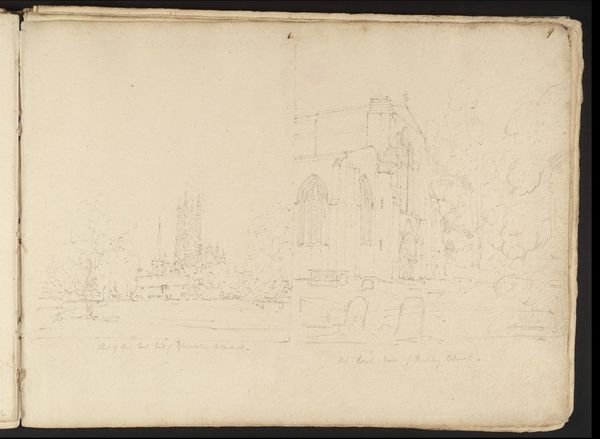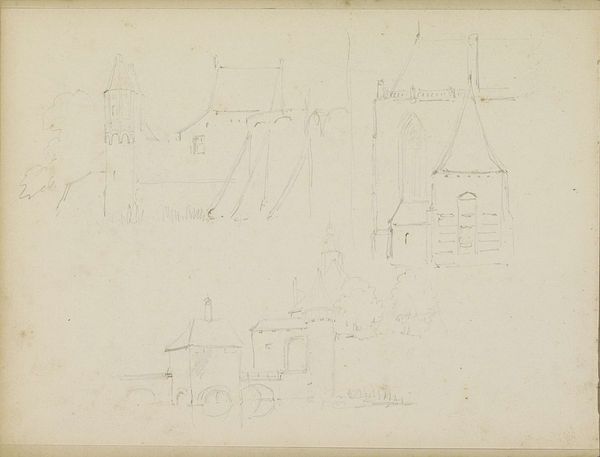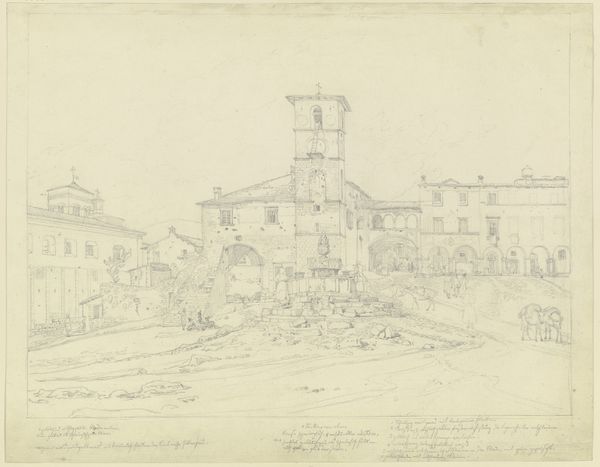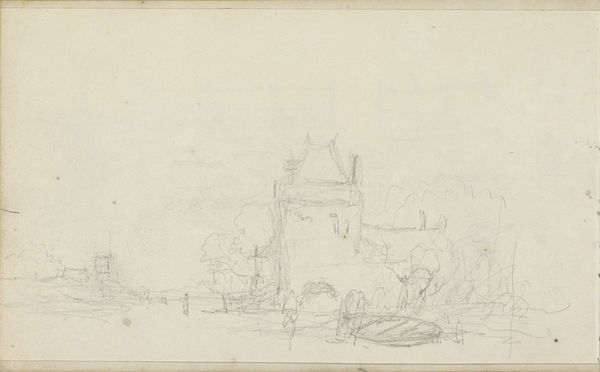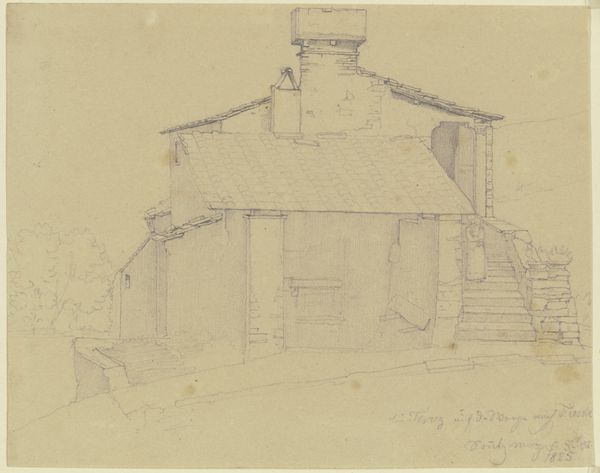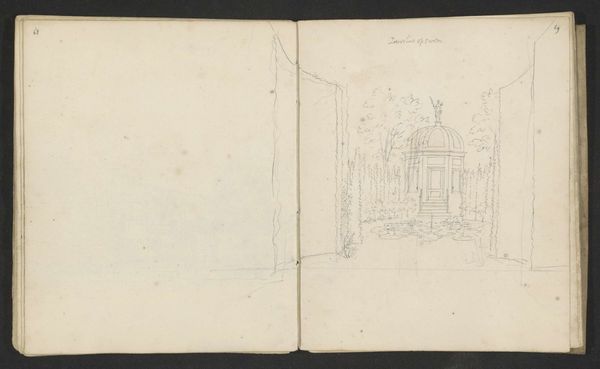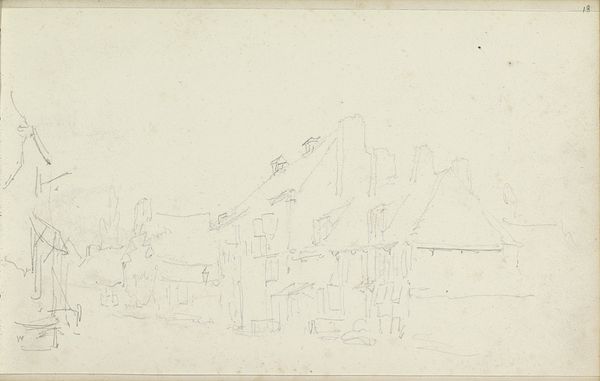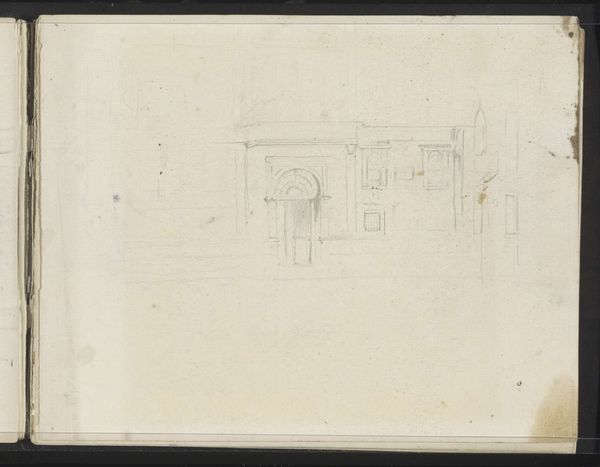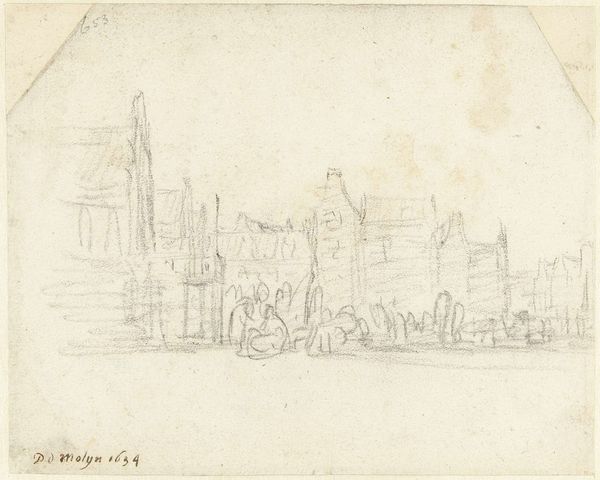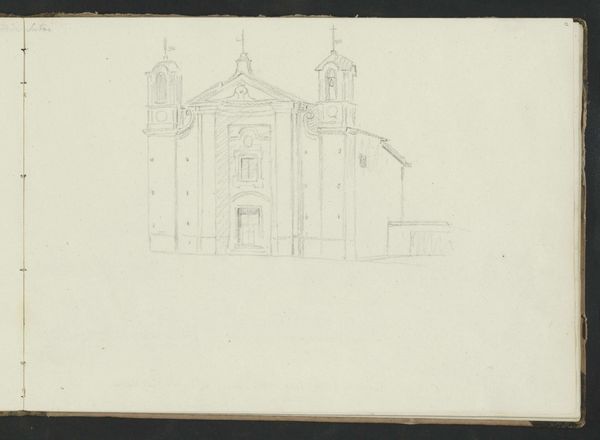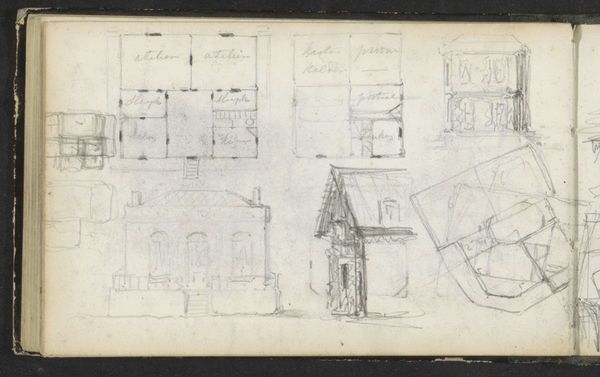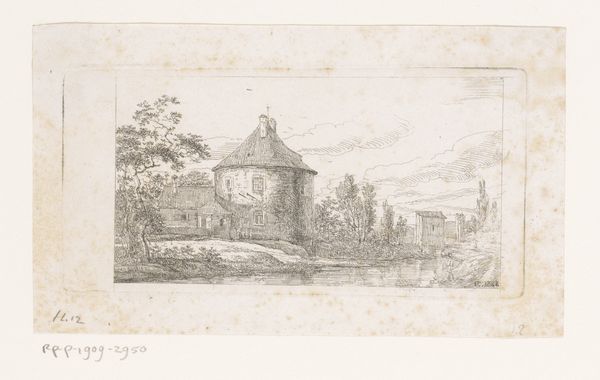
drawing, pencil
#
drawing
#
quirky sketch
#
pen sketch
#
sketch book
#
hand drawn type
#
landscape
#
personal sketchbook
#
sketchwork
#
pen-ink sketch
#
pencil
#
pen work
#
sketchbook drawing
#
sketchbook art
#
realism
Copyright: Rijks Museum: Open Domain
Curator: What a charmingly unassuming sketch. The Rijksmuseum holds this drawing by Abraham Teerlink, titled "Chiesa di San Marco te Caprarola," dating from around 1808 to 1857. Editor: It feels so immediate, almost like catching a glimpse of a half-remembered dream. The light is muted, and the church seems to hover on the page, a vessel of quiet contemplation. Curator: Precisely! It’s from one of his sketchbooks, so this wasn’t intended as a finished piece. Teerlink, of course, was part of a larger artistic movement where artists sketched outdoors to capture landscapes. He would have likely viewed the Italian countryside, dotted with churches just like this one, as part of his European travels. Editor: Yes, and Caprarola, with its Farnese Palace looming over the town, was a potent symbol of ecclesiastical and aristocratic power. Even in this simple sketch, the church projects the aura of spiritual authority interwoven with the local community. Do you notice how the artist carefully rendered the church tower? Curator: A potent reminder of the established social hierarchy. Architectural sketches such as these tell us about what was deemed worthy of preserving and celebrating at a certain point in time. The creation of a market for landscape painting led to this increase in the frequency of sketching expeditions for academic artists, and to the cultural significance attached to landmarks such as this church. Editor: And even the quick strokes of pencil contribute to this sense of almost ethereal, lasting reverence. Churches carry such a wealth of cultural baggage: faith, power, community, continuity. It invites introspection on how we map meaning onto places. Curator: Exactly, Teerlink probably wasn't even conscious of those connections he was making, or of how those sketches would then act as evidence of evolving attitudes within artistic circles, and a changing market within the context of nineteenth-century landscape art. Editor: It goes beyond the mere record. This sketch taps into something deeper – that enduring relationship between people and places charged with significance. It certainly makes me contemplate what aspects of my surroundings future generations will decide to celebrate or record, or simply disregard. Curator: It speaks to the quiet persistence of cultural memory. Editor: Indeed.
Comments
No comments
Be the first to comment and join the conversation on the ultimate creative platform.
